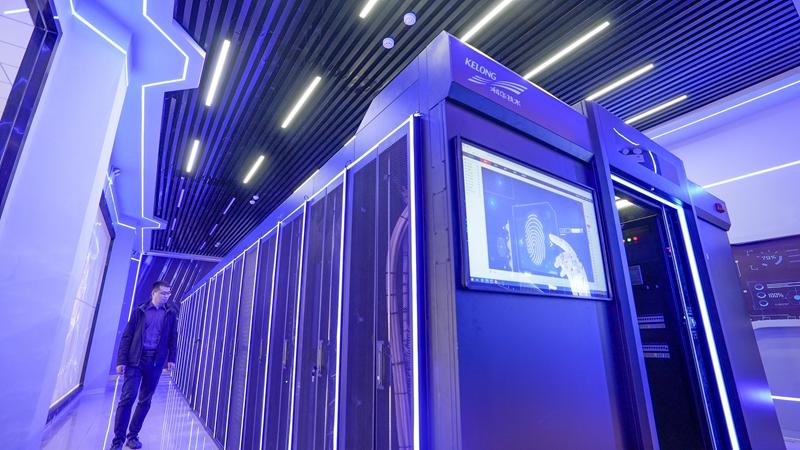
 0 Comment(s)
0 Comment(s) Print
Print E-mail China.org.cn, August 31, 2024
E-mail China.org.cn, August 31, 2024

Hami Integrated Computing Center. [Photo provided to China.org.cn]
As the global race for artificial intelligence heats up, computing power has emerged as a critical strategic asset and a new productive force. With its burgeoning digital economy and advancements in large language models, China is at the forefront of this technological revolution. Driven by a strategic plan outlined by government departments in October 2023, the nation aims to boost its aggregate computing power by over 30% by 2025.
Energy efficiency is a crucial aspect of this development, as data centers and computing systems require substantial amounts of electricity for operation and cooling. To address this, China is integrating green energy into its computing power infrastructure. Western provincial-level regions, with abundant renewable resources and favorable geography, are seizing this opportunity to establish massive data centers that support the nation's intelligent industries.
Hami city in eastern Xinjiang Uygur autonomous region, a key national energy base, is a prime example. With a total installed power capacity of 25.98 million kilowatts, 65.8% of which comes from renewable sources, Hami is an ideal hub for green electricity. Additionally, by-products from Hami's coal chemical industry can be used for peak regulation of new energy, further reducing green electricity costs.
Yiwu county offers additional advantages with an average annual temperature of just 4.5°C, which can significantly reduce the Power Usage Effectiveness (PUE) and Carbon Usage Effectiveness (CUE) levels of data centers. The county's stable geological structure also makes it a favorable location for building large-scale integrated computing centers.
Since 2023, Hami city has actively seized major strategic opportunities such as the "east data, west computing" project, the Digital Silk Road and the China (Xinjiang) Pilot Free Trade Zone. The city has proactively planned and cooperated with national computing hub nodes and economically developed cities in the central and eastern regions.
With support from the National Information Center, Hami, Zhengzhou in Henan province and Qingyang in Gansu province jointly signed a cooperation agreement and established the Zhengzhou-Qingyang-Hami Urban Computing Network Experimental Field. This strategic layout aims to accelerate the integrated development of both the new energy and green computing industries.
The Hami Integrated Computing Center has been completed with an investment of 97 million yuan. The project is configured and designed for intelligent computing, supercomputing and general computing. It houses eight intelligent computing servers, 80 supercomputing nodes and 100 general computing servers, with a total computing power of approximately 150 PFLOPS, making it an advanced integrated computing center for demonstration, teaching, research and computing.

Hami Integrated Computing Center. [Photo provided to China.org.cn]
The computing center has already established collaborations in various fields such as healthcare, wind power, new energy and the metaverse, said Li Chao, executive director of the center. Li went on to add that in the future the center plans to focus on quantum computing as well as to actively communicate with institutes under the Chinese Academy of Sciences in Hefei and Tsinghua University to explore the center's application in various fields such as finance, forestry, agriculture and biopharmaceuticals.
Go to Forum >>0 Comment(s)